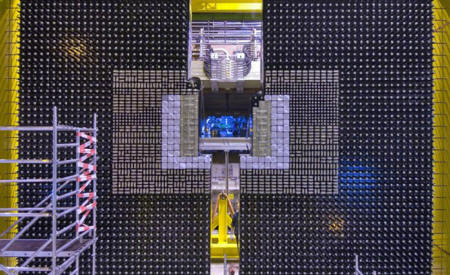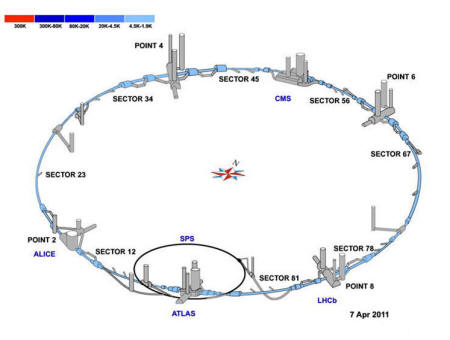|
Scientists at CERN’s Large Hadron Collider have discovered, with “overwhelming” certainty, the existence of a new class of subatomic particles, exotic hadrons.
In related news, CERN has begun the painstaking process of turning the LHC back on after being switched off for upgrades over the last 12 months.
When it returns, in early 2015, the LHC will have almost twice as much collision power, which will hopefully allow it to further investigate the Higgs boson, and probe the theory of supersymmetry.
First, those exotic hadrons.
In all honesty, I don’t really understand them myself, but I’ll try my best to explain them - and the significance of this discovery.
Basically, at four points around the LHC’s 17-mile (27km) circumference, there are four major detectors. You’ve probably heard of ATLAS and CMS, which discovered the Higgs boson, but there’s also ALICE (which studies quark-gluon plasma), and LHCb (which studies the weird relationship between matter and antimatter).
These detectors are all absolutely massive, weighing over 5,000 tonnes a piece.
LHC diagram, showing the four main detectors
The exotic hadrons were found by LHCb (pictured top). The 'b' stands for the beauty quarks (b quarks) that the LHCb is designed to detect.
Hadrons, such as protons and neutrons, are made up of quarks.
The Large Hadron Collider, as its name implies, collides protons together at very high energies, smashing them back into quarks.
Historically there are only two types of hadron - baryons, which consist of three quarks, and mesons, which consist of two quarks. Now, LHCb is reporting that it’s discovered a third kind of hadron… the exotic hadron!
The exotic hadron, which the LHCb is reporting with a confidence of 13.9 sigma, appears to be made of four quarks.
It has the official name of Z(4430), which means it has a mass of 4430 MeV, or around four times that of a proton. Beyond that, there doesn’t seem to be much to can say - it’s exciting that we’ve found a new arrangement of quarks, but no one seems to know the significance of this finding yet.
Quantum Diaries has a slightly more expert write-up of the discovery, if you’re looking for more info about exotic hadrons. (The chance of a 13.9 sigma discovery being wrong, incidentally, is on the order of winning the lottery multiple times in a row.)
Another part of the LHCb detector
In other news, CERN’s engineers have begun the process of switching the LHC back on.
The LHC has been powered down for the last year, while maintenance and upgrades were performed. Turning it back on is a slow, multi-stage process that needs to be done carefully, one component at a time, to make sure everything is working as intended.
By the end of 2014, the LHC should be back in action and ready to smash protons together at energies of up to 13 teraelectronvolts (TeV), or six times the power of any other particle accelerator.
We have an in-depth story about the LHC upgrade, if you’re looking for more details.
|



